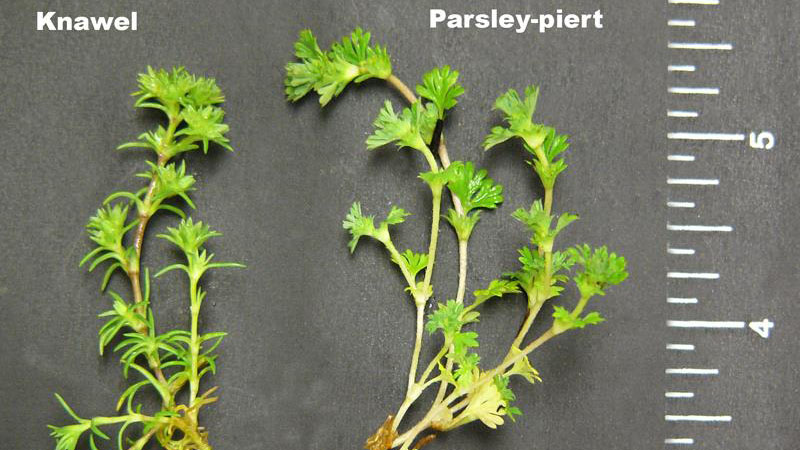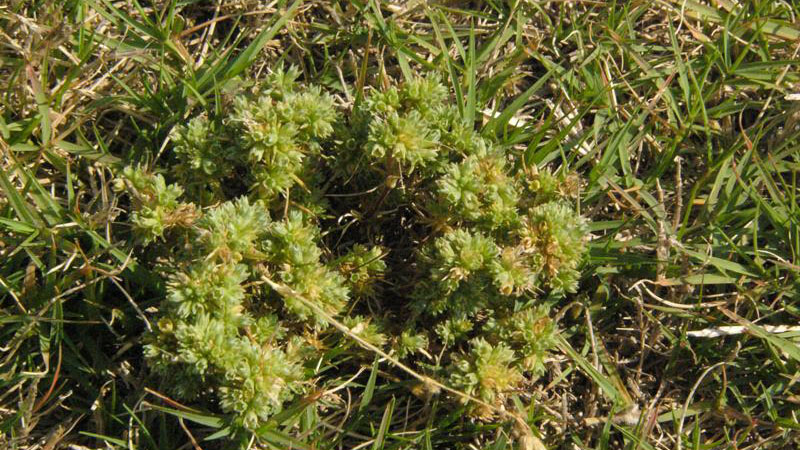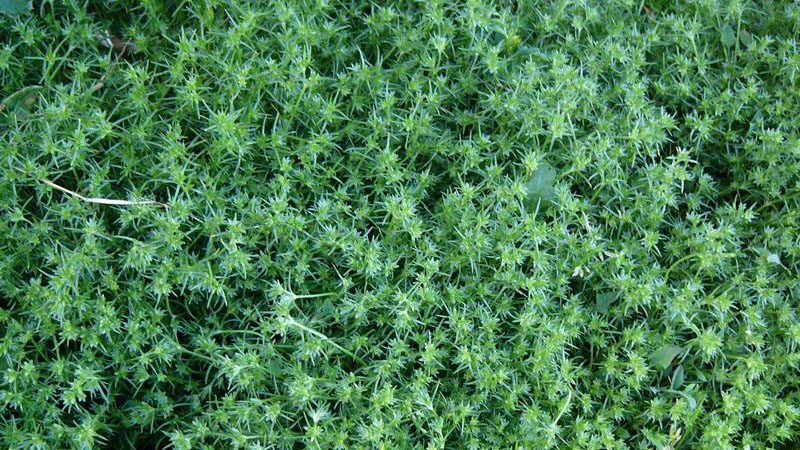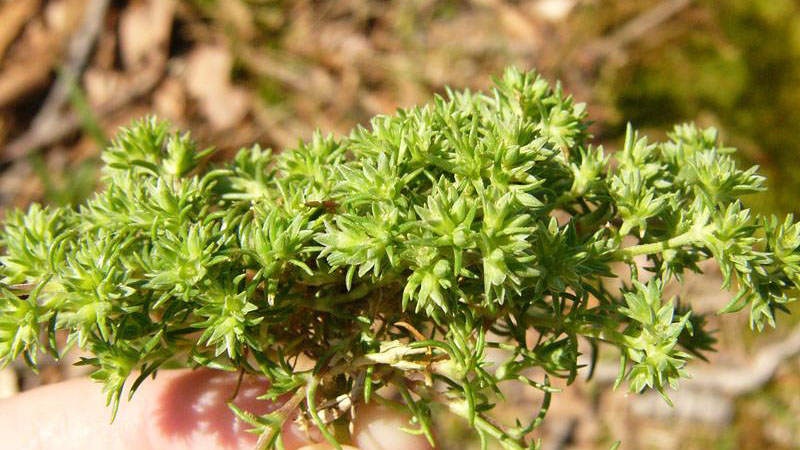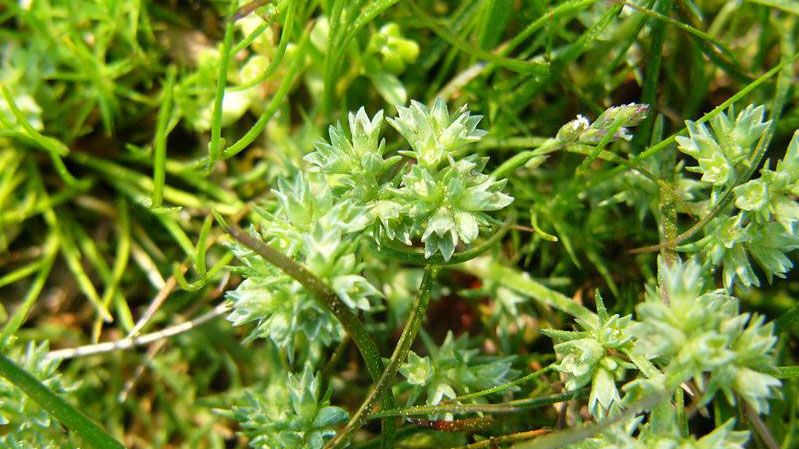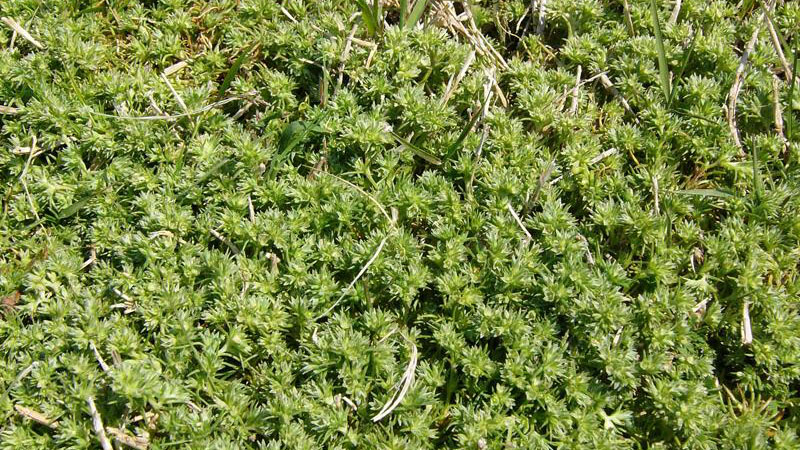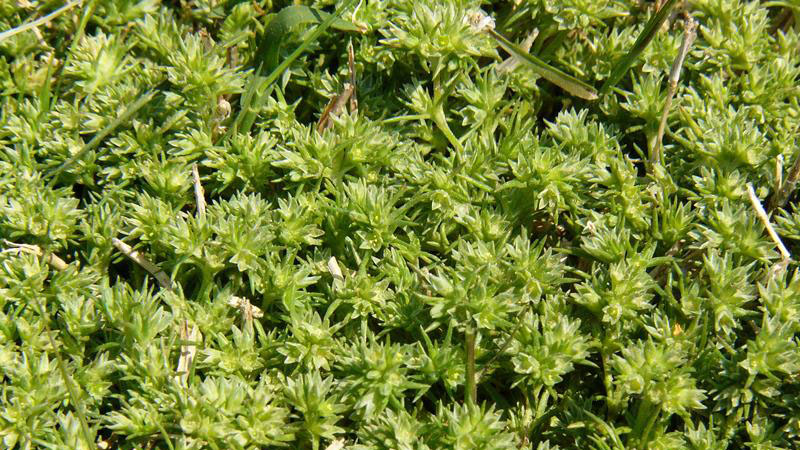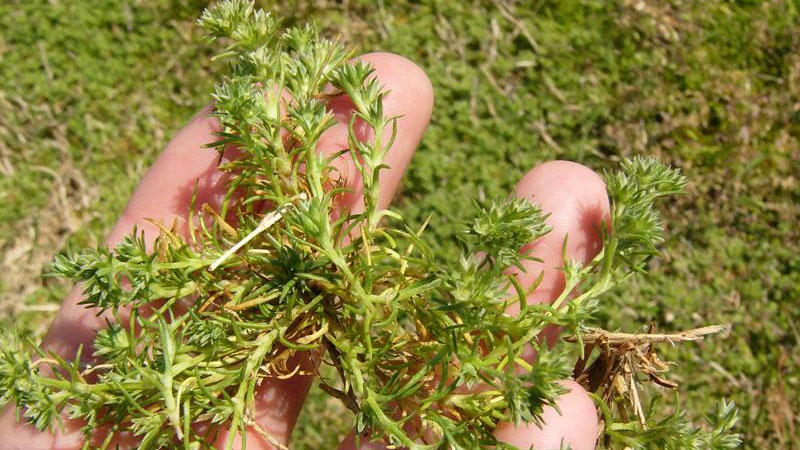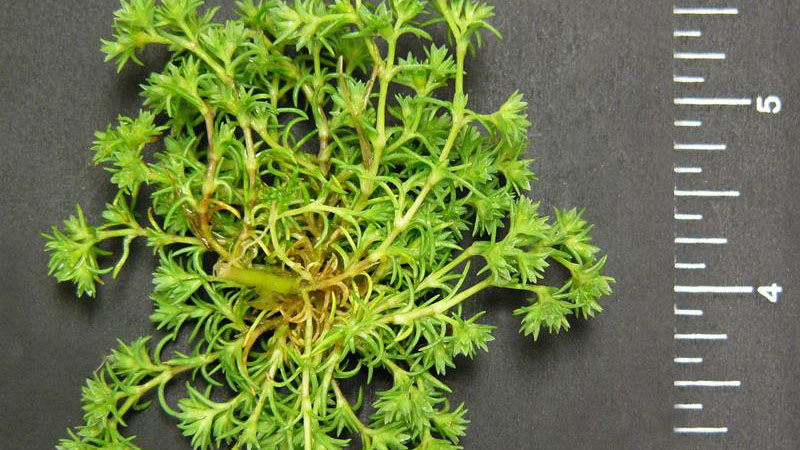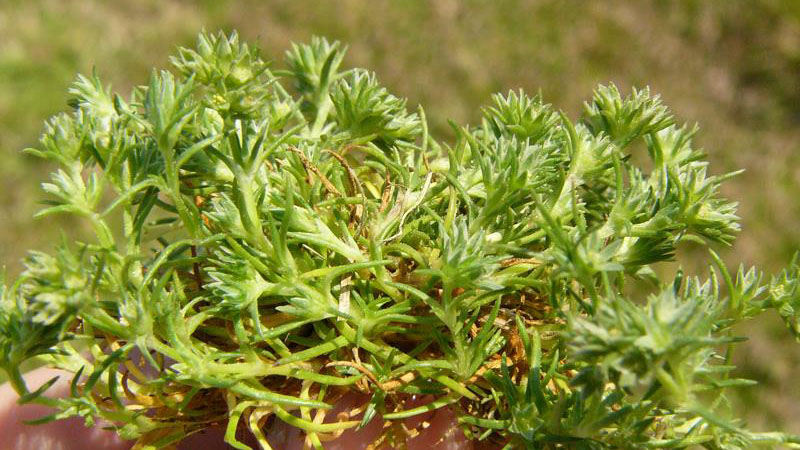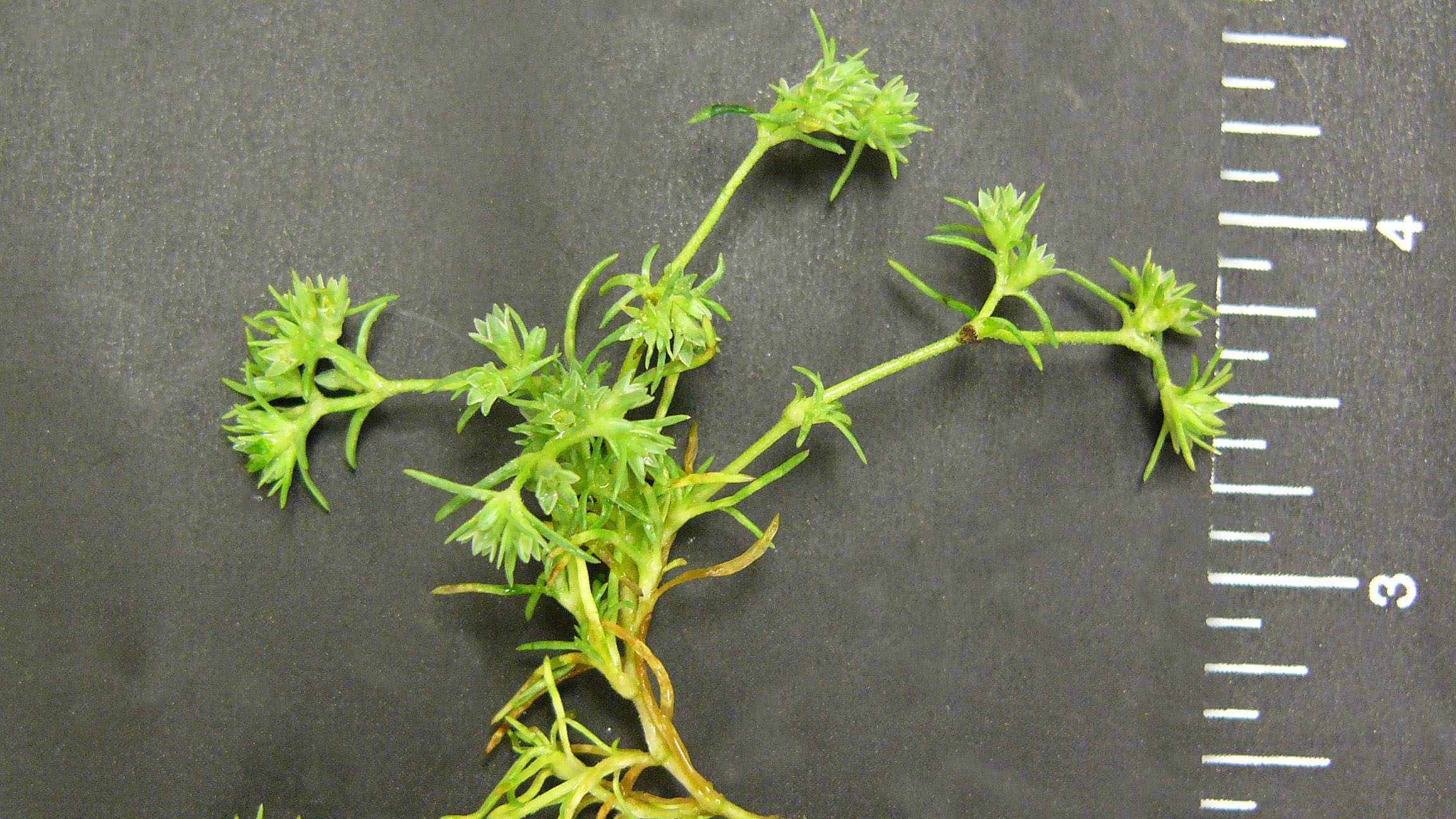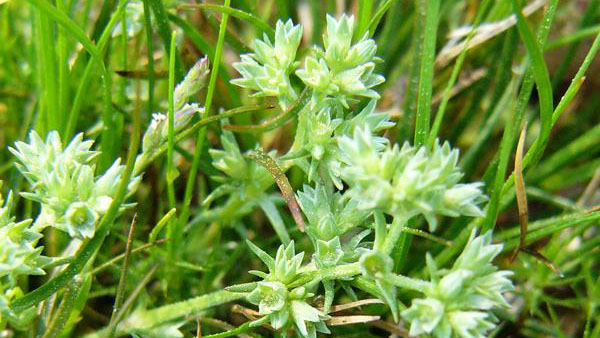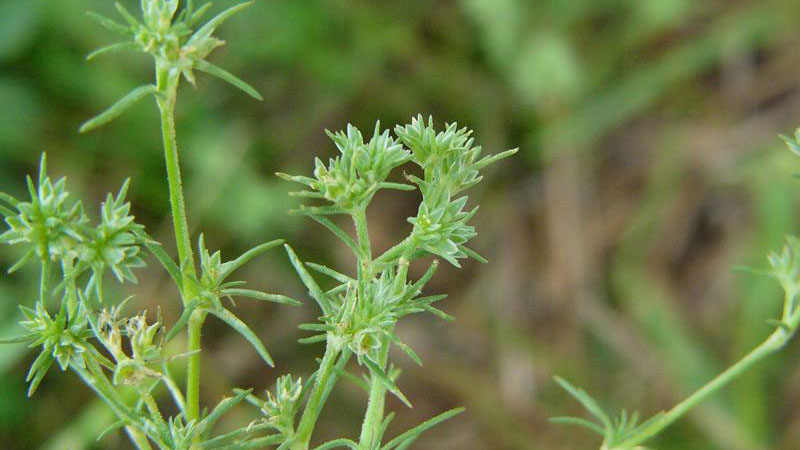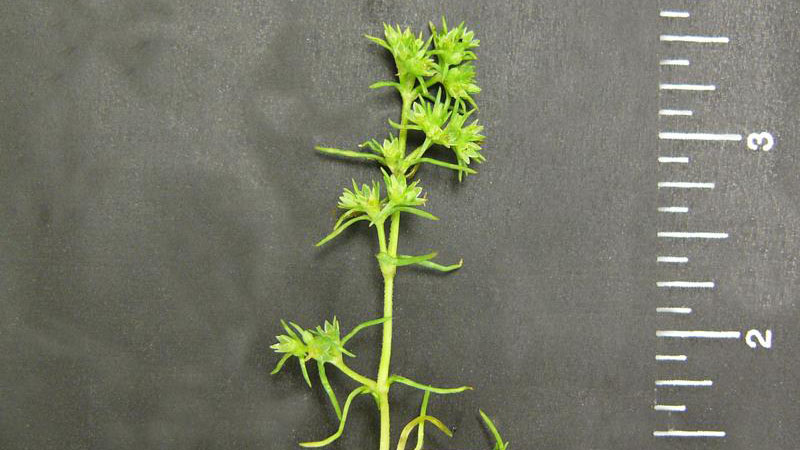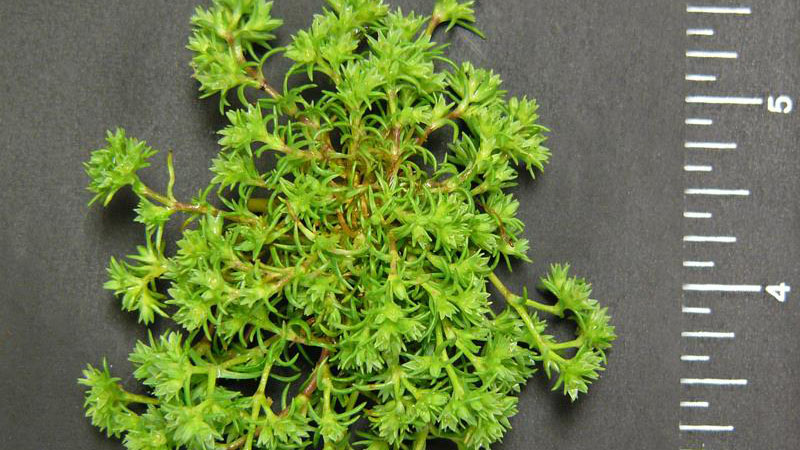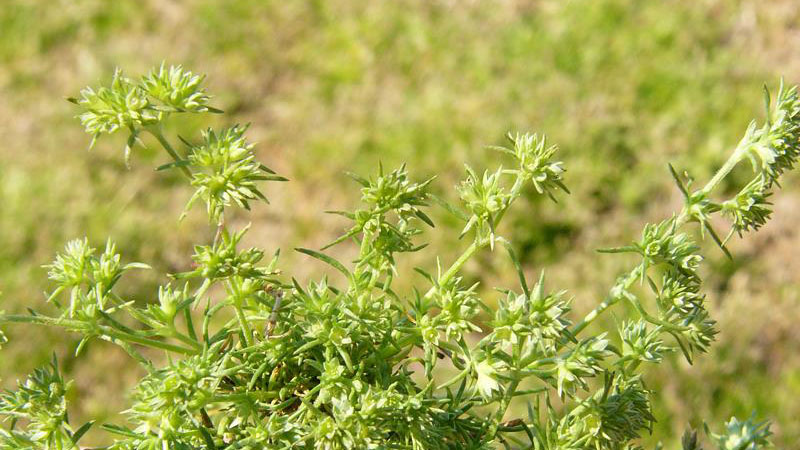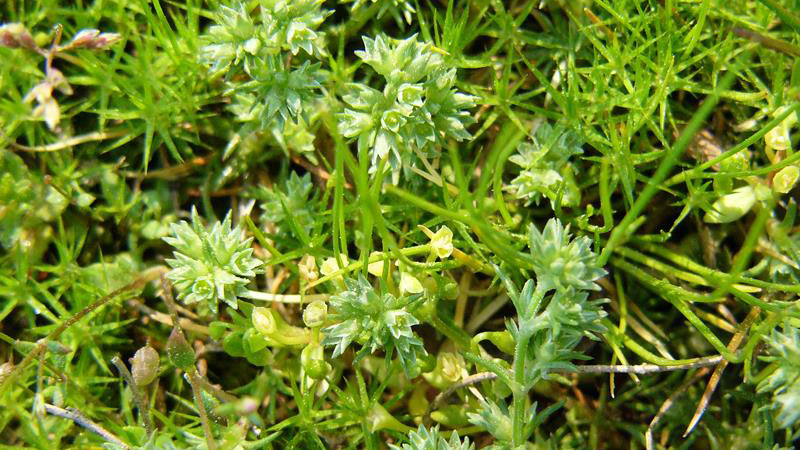Description
Knawel is a winter annual which, when it first germinates, may go unnoticed because of its grasslike features. It closely resembles parsley-piert and lawn burrweed. It is a freely branched plant with spreading stems. Leaves, clasping the stem, are opposite, linear, less than 1 mm wide, and sharp-pointed. The very inconspicuous flowers are clustered in the leaf axils. They are small, green, lacking petals, and somewhat spiny to the touch.
Cultural Control
Winter annual broadleaf weeds germinate in the fall or winter and grow during any warm weather, which may occur in the winter, but otherwise remain somewhat dormant during the winter. They resume growth and produce seed in the spring and die as temperatures increase in late spring and early summer. They quickly invade thin turf areas especially where there is good soil moisture. Shade may also encourage growth. Many have a prostrate growth habit and are not affected by mowing. A dense, vigorous turf is the best way to reduce the encroachment of winter annual weeds. First, select adapted turfgrass cultivars for your area and then properly fertilize, mow, and water to encourage dense growth.
Species Data
- GROWTH SEASON / LIFE CYCLE
- winter annual weed
- GROWTH HABIT
- LEAFLET NUMBER
- LEAF MARGIN
- smooth
- LEAF HAIRS
- none
- LEAF / LEAFLET SHAPE
- LEAF WIDTH
- <1⁄2 inch
- LEAF VENATION
- parallel
- LEAF ARRANGEMENT
- opposite
- ROOT TYPE
- fibrous; taproot
- FLOWER COLOR
- very inconspicuous green flowers
Figure 18
- very inconspicuous green flowers
Publication date: Nov. 21, 2017
N.C. Cooperative Extension prohibits discrimination and harassment regardless of age, color, disability, family and marital status, gender identity, national origin, political beliefs, race, religion, sex (including pregnancy), sexual orientation and veteran status.

